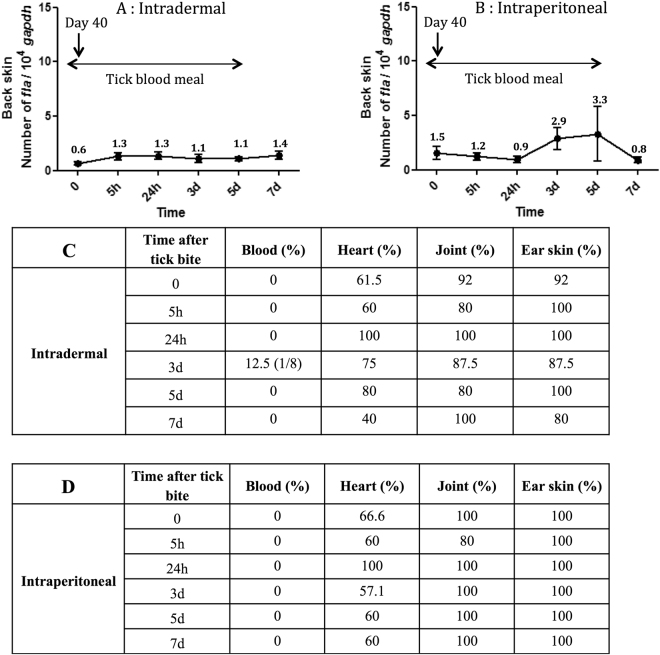Figure 1.
Feeding of uninfected Ixodes ricinus nymphs on chronically infected mice does not affect the Borrelia spirochete load in the mouse skin surrounding the tick feeding lesion. Mice were infected with Borrelia burgdorferi ss strain N40 via (A) intradermal or (B) intraperitoneal inoculation. At 40 days post-infection, the mice were infested with 5 to 10 uninfected I. ricinus nymphs. At different time points during nymphal attachment (5 h, 24 h, 3d, 5d, 7d), the mice were sacrificed and the mouse skin surrounding the tick feeding lesions was excised. The Borrelia load in the mouse skin was estimated using qPCR. Different mouse organs were tested by culture for seven days to determine the presence of Borrelia. Tissue biopsies that yield spirochete-negative cultures were retested using qPCR. The blood remained spirochete-negative over the duration of the tick blood meal, with the exception of one mouse at day 3 that had been inoculated intradermally.

